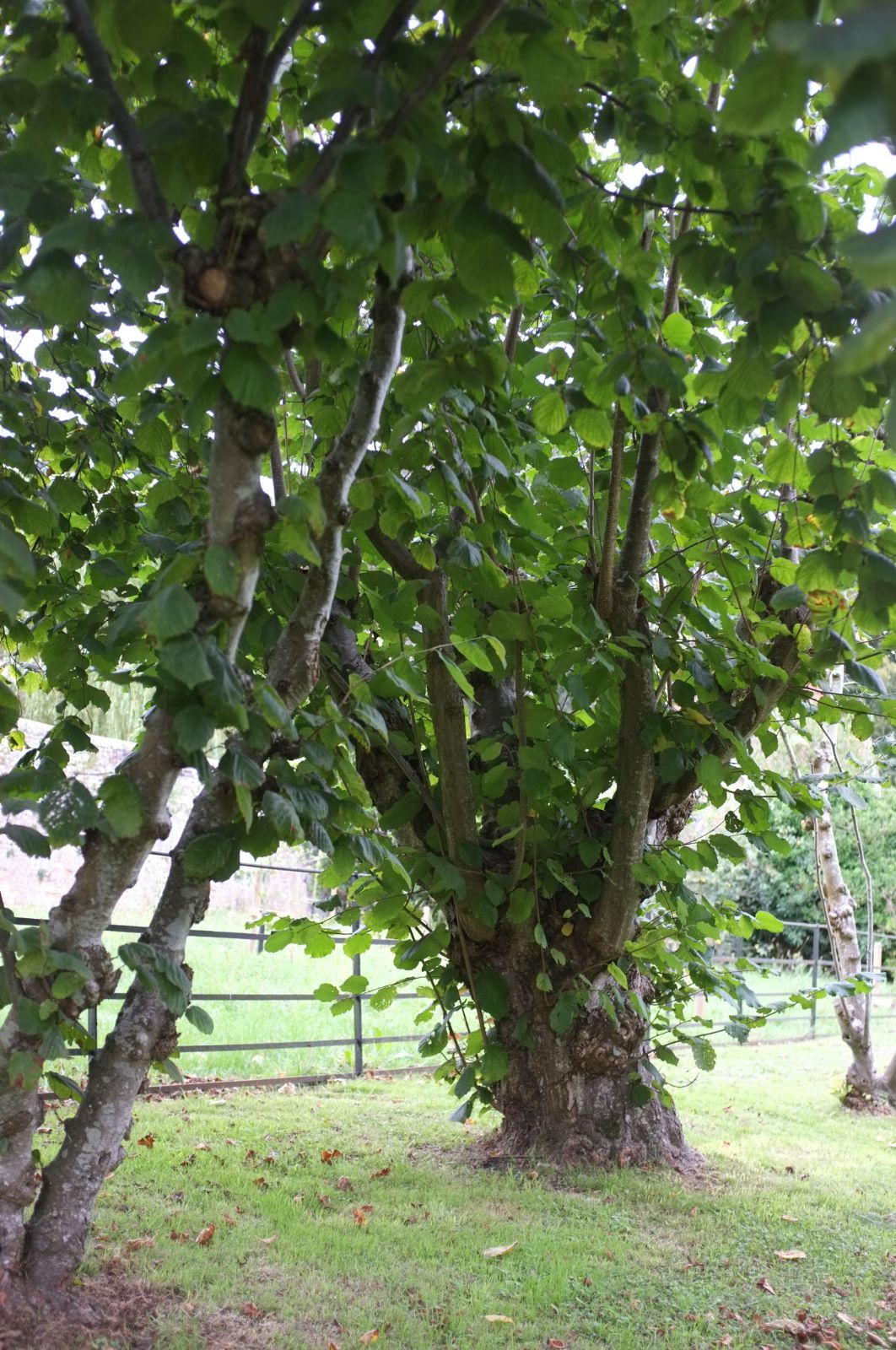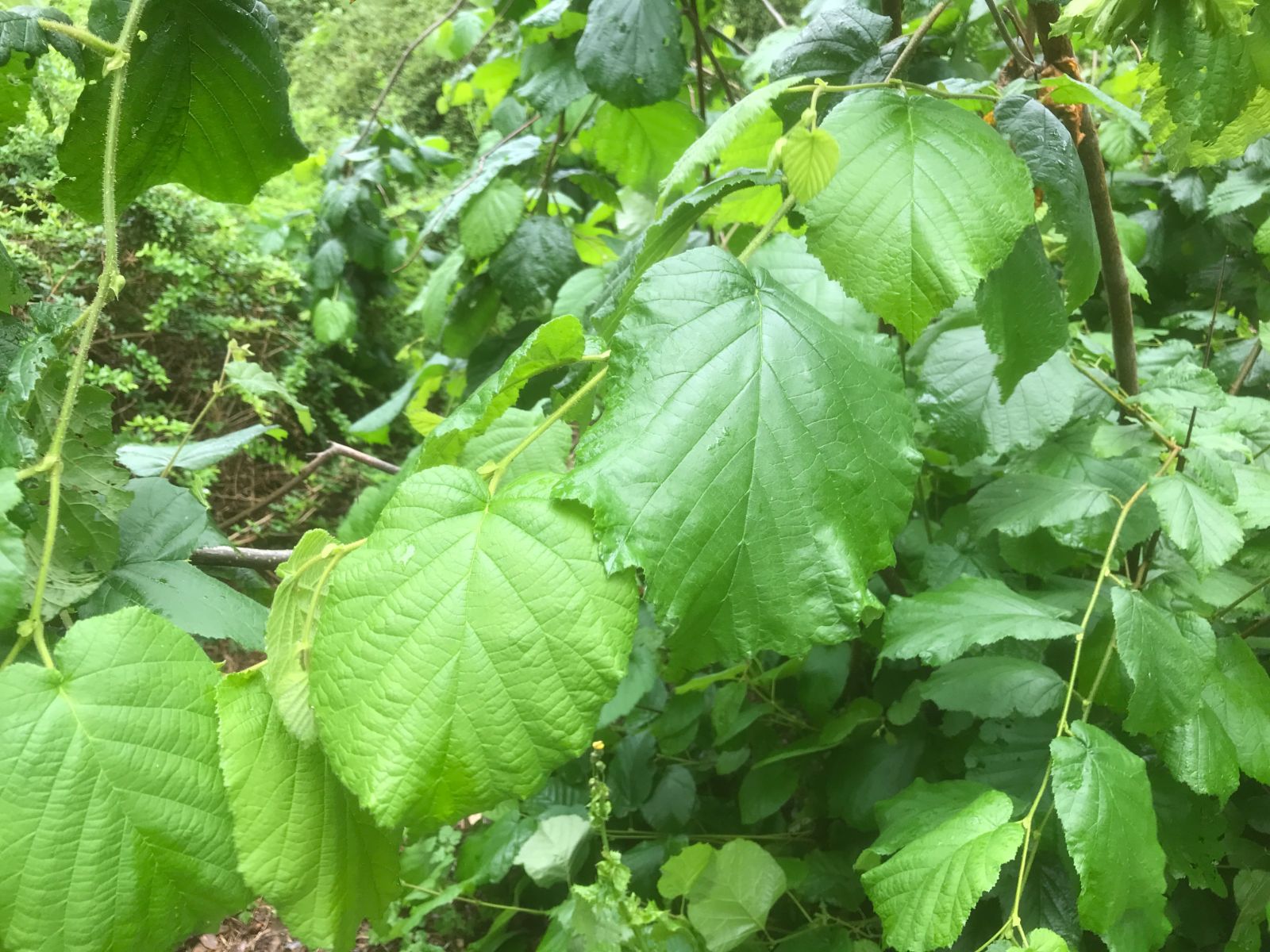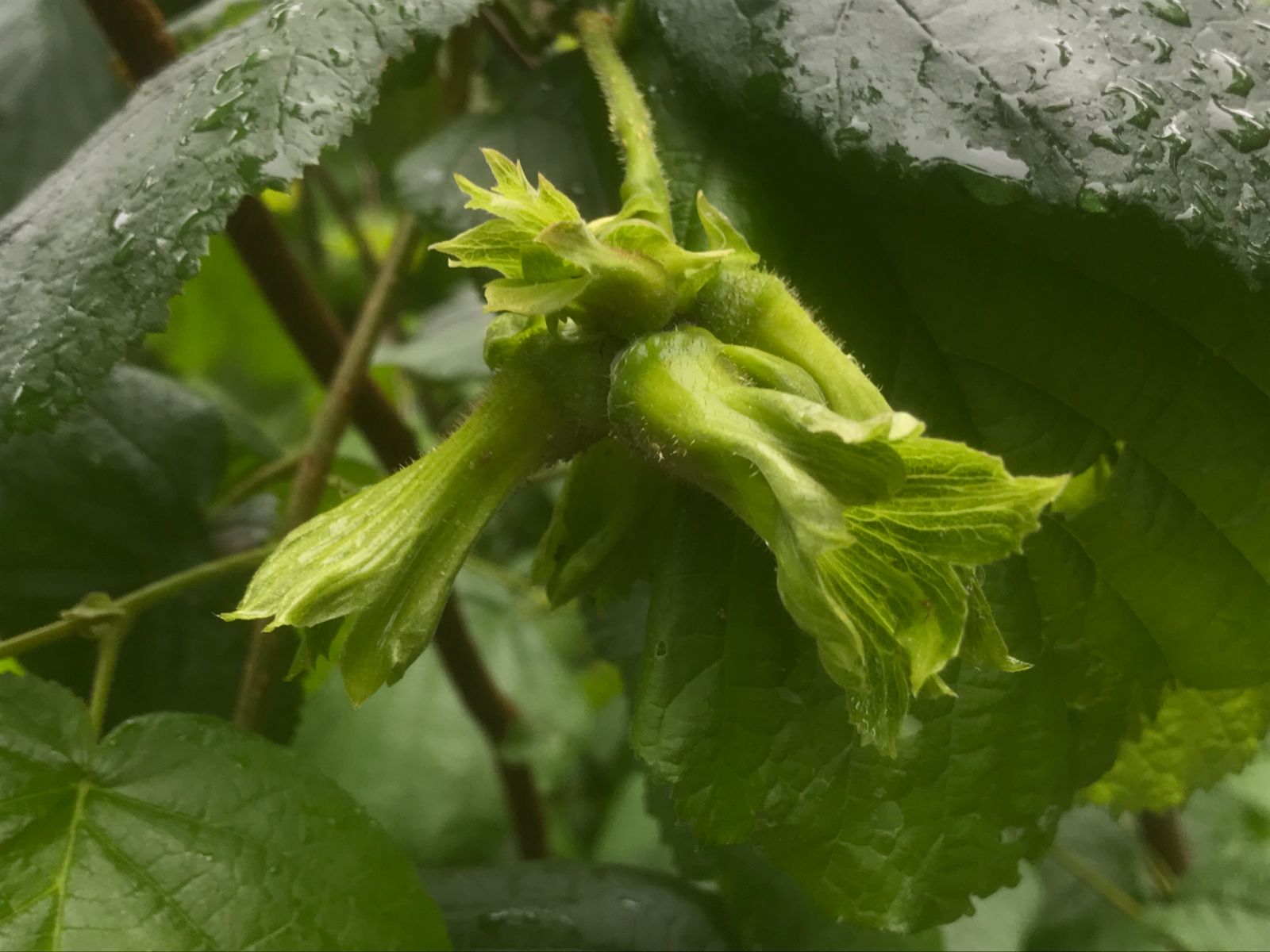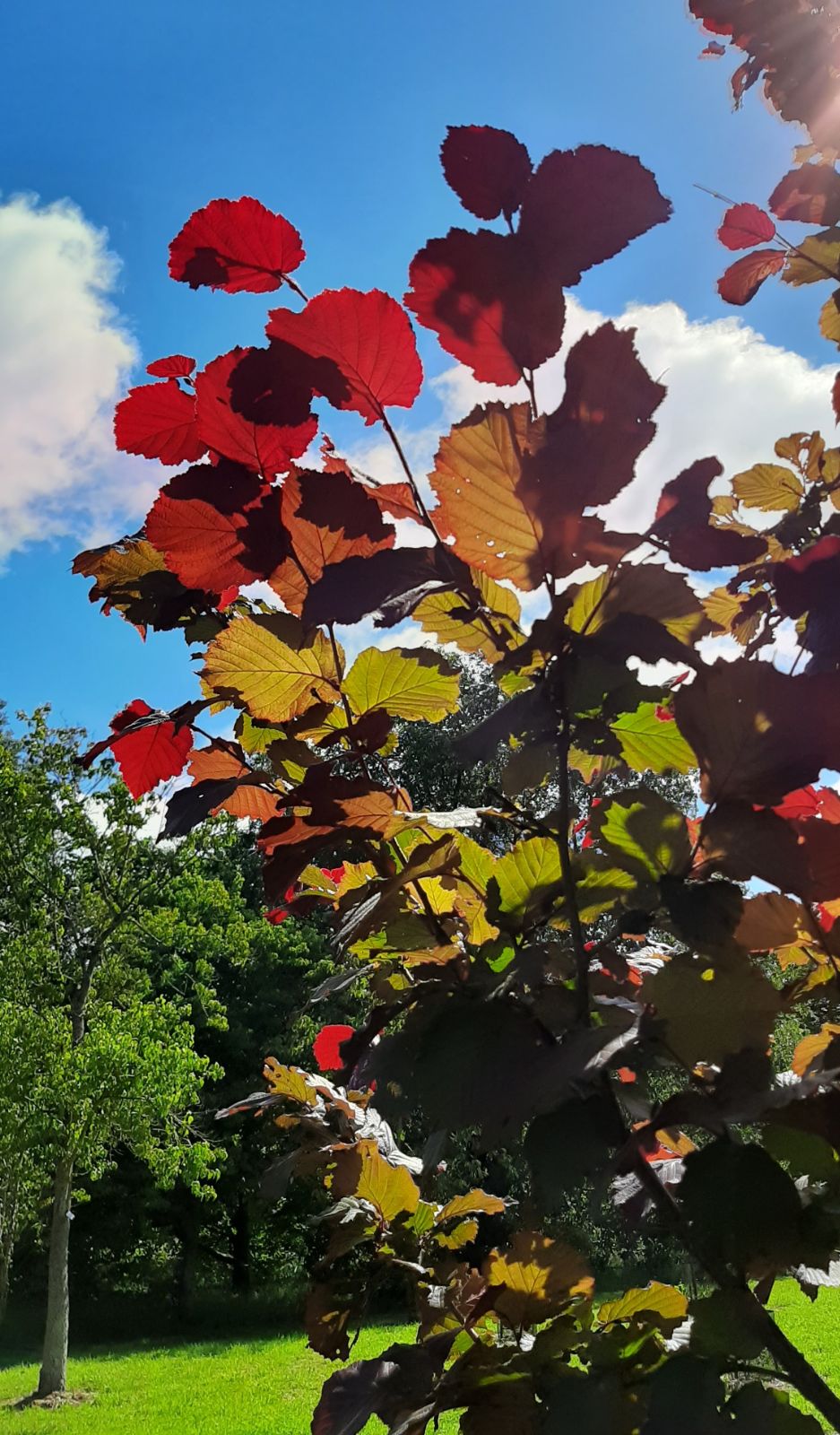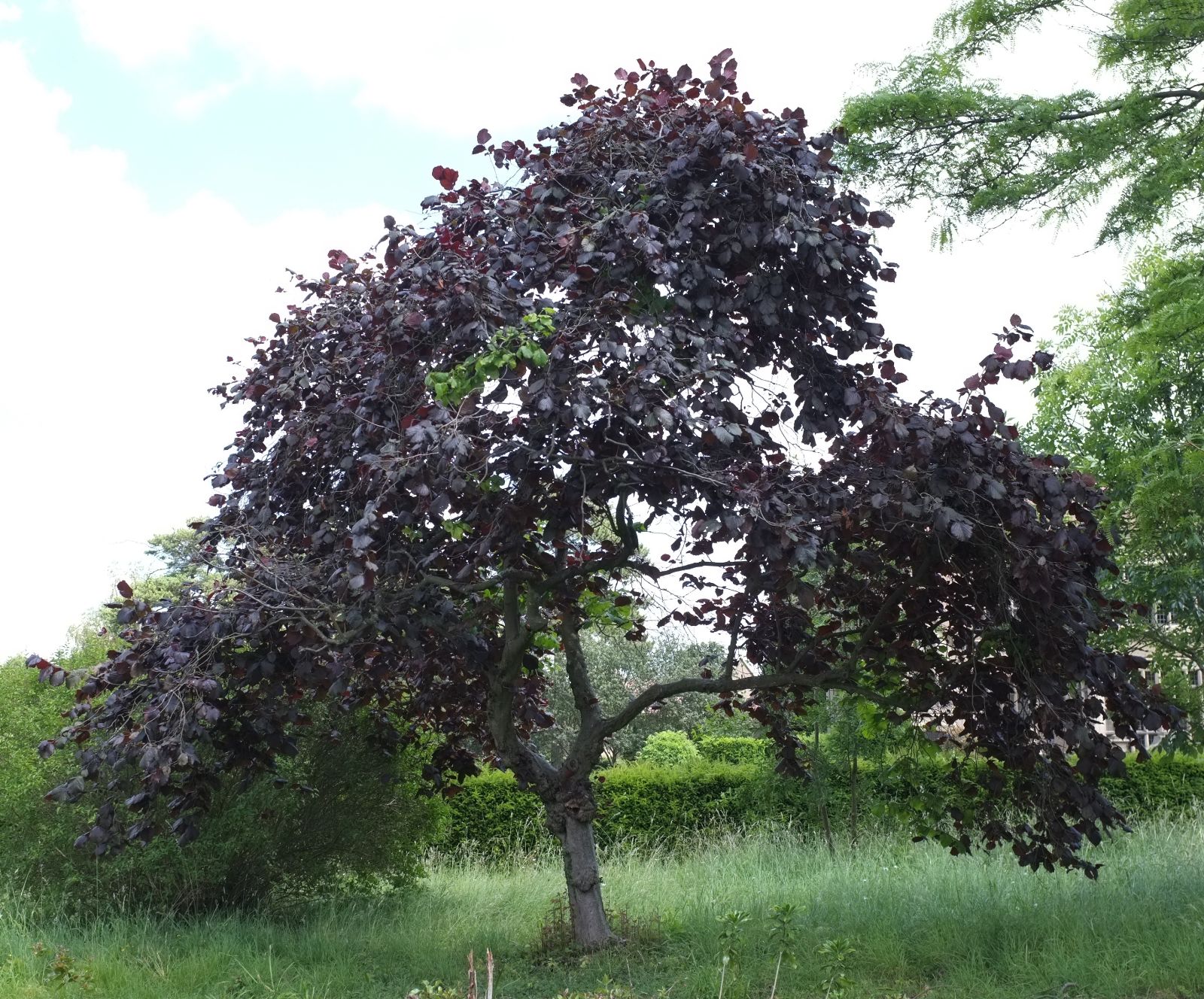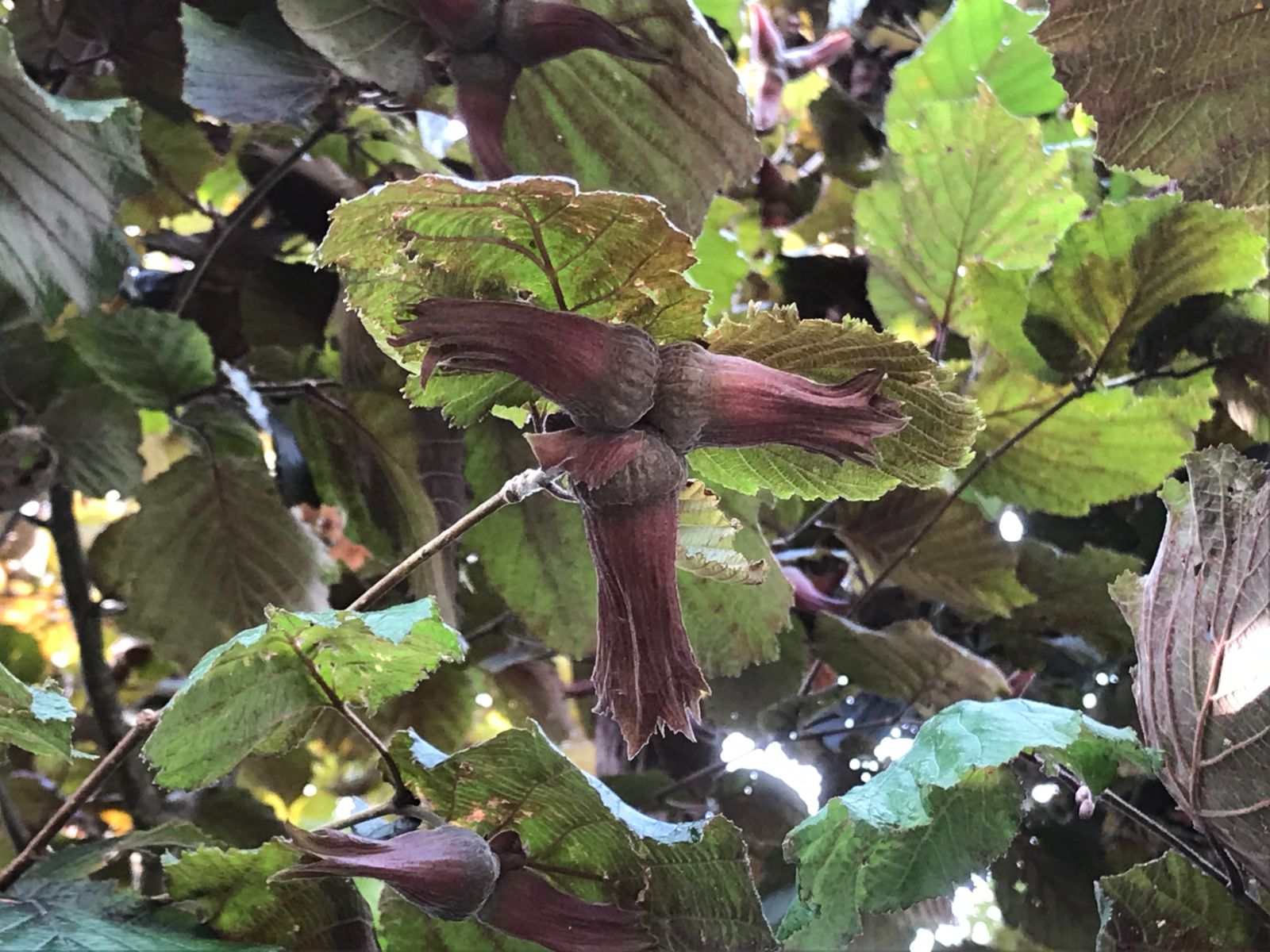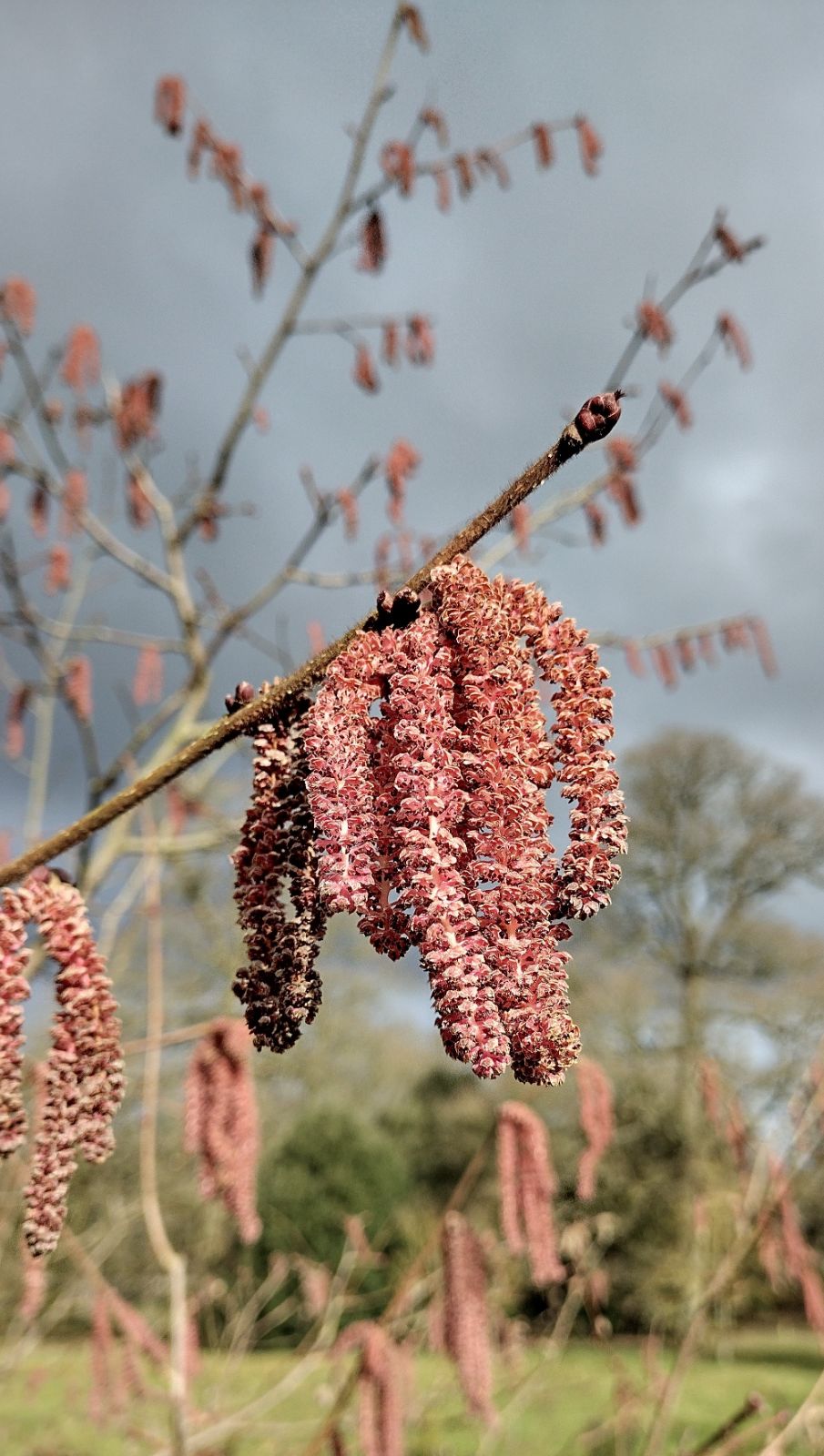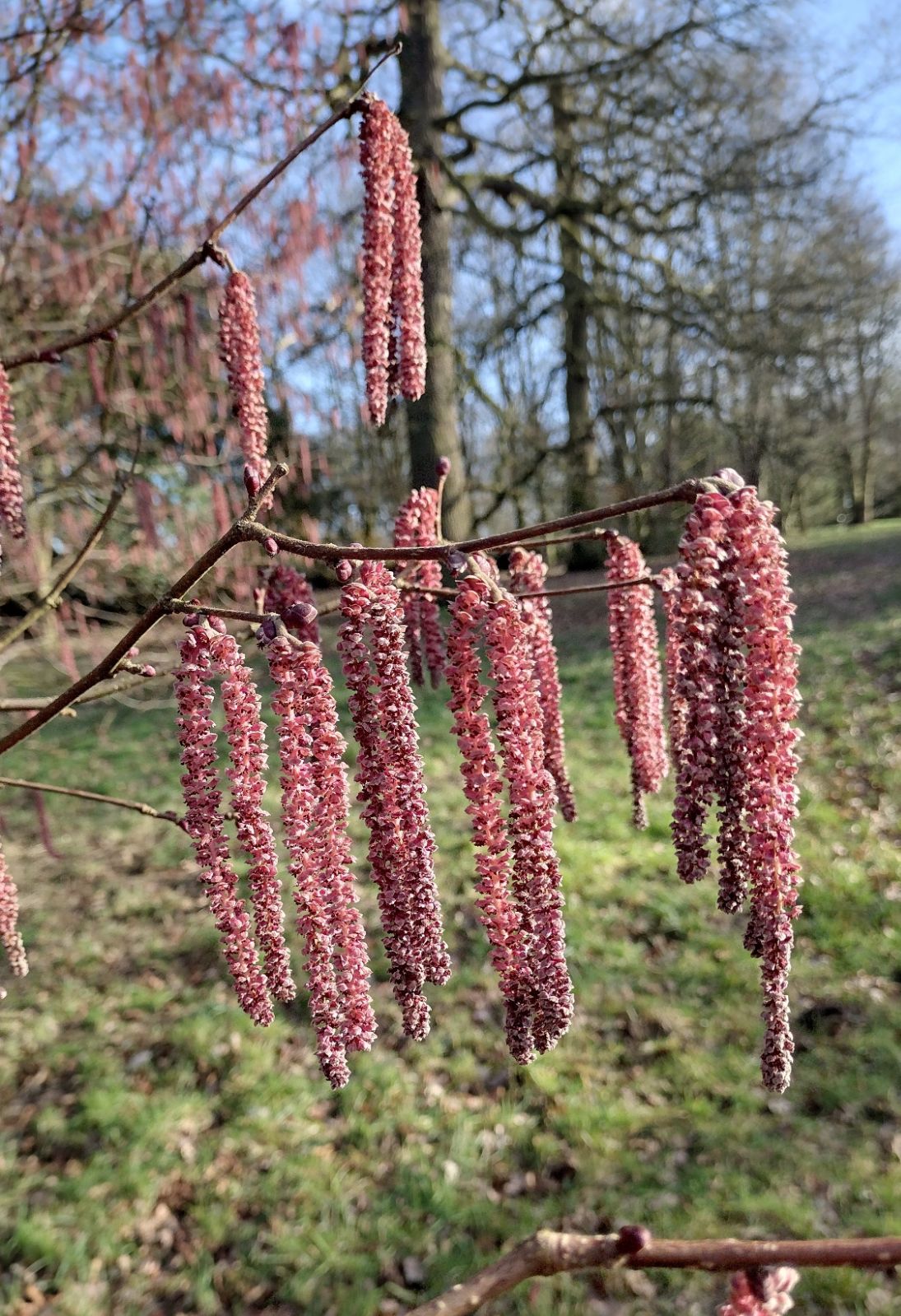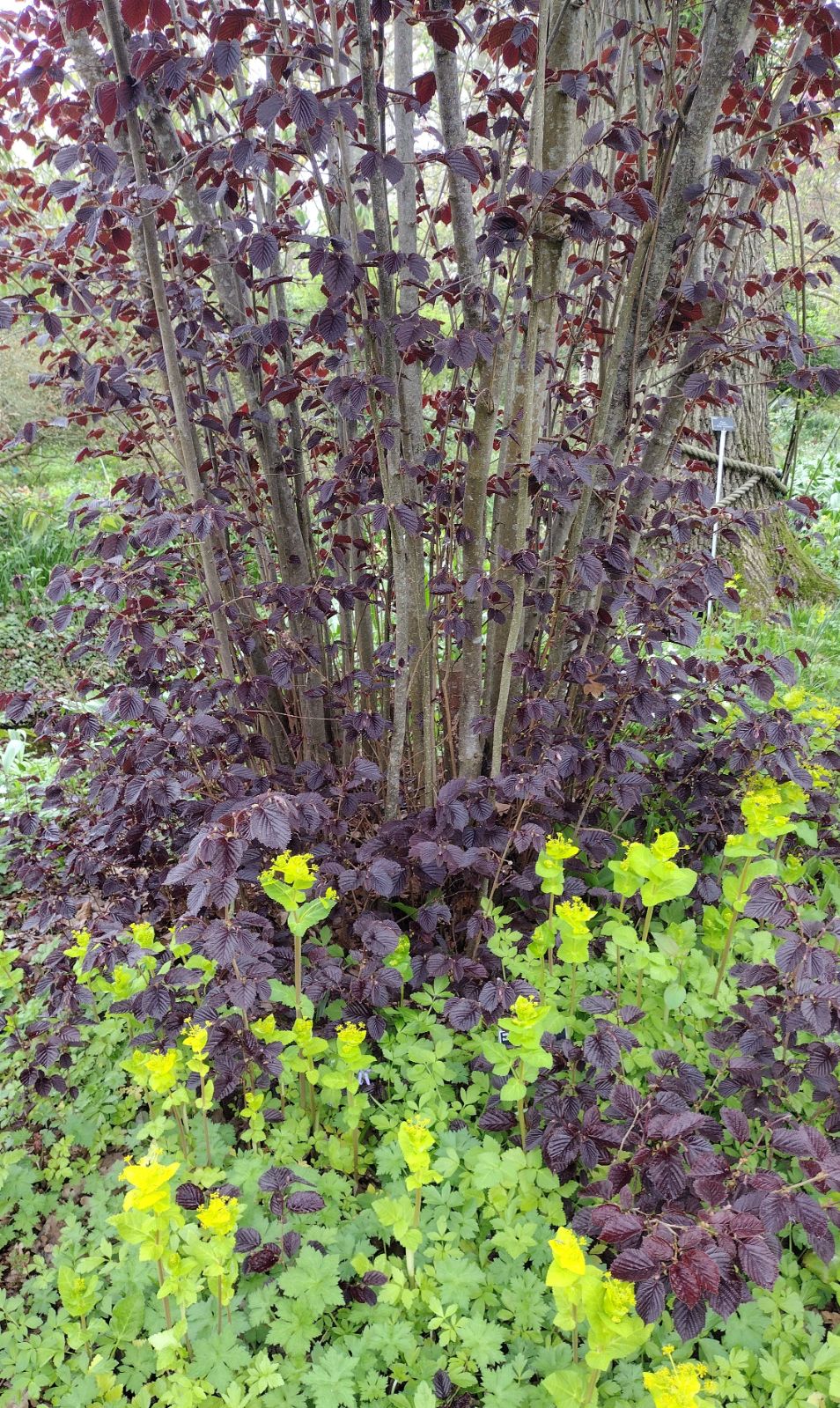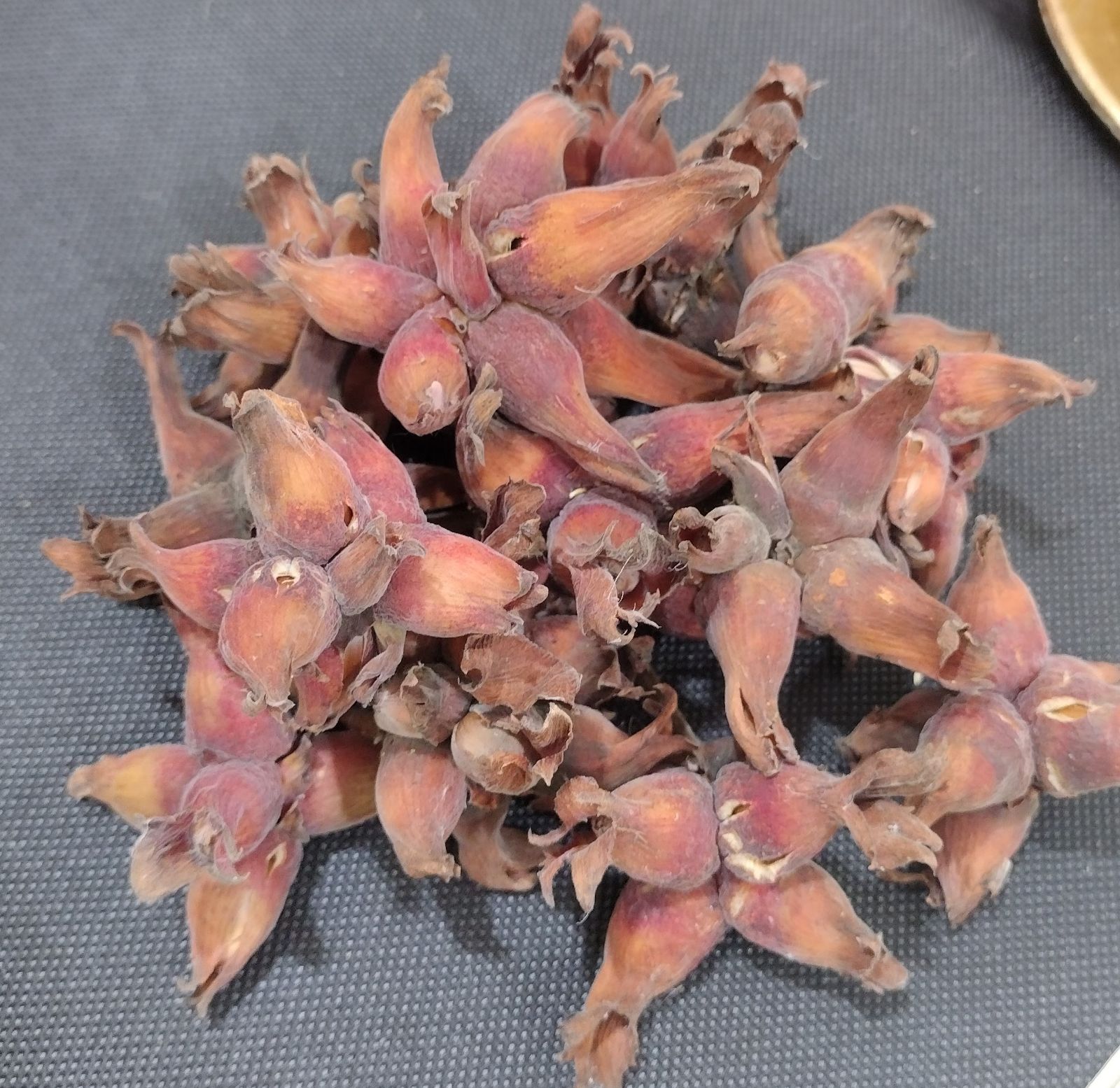Corylus maxima
Sponsor
Kindly sponsored by
Kent Men of The Trees
Credits
Owen Johnson & Richard Moore (2023)
Recommended citation
Johnson, O. & Moore, R. (2023), 'Corylus maxima' from the website Trees and Shrubs Online (treesandshrubsonline.
Genus
Common Names
- Filbert
Synonyms
- Corylus tubulosa Willd.
- Corylus avellana var. tubulosa Loudon
- Corylus arborescens G. Gaertn.
- Corylus balcana P.D. Sell
Infraspecifics
Other taxa in genus
- Corylus americana
- Corylus americana × avellana
- Corylus avellana
- Corylus avellana × cornuta
- Corylus avellana × heterophylla
- Corylus avellana × maxima
- Corylus avellana × sieboldiana
- Corylus avellana × sutchuenensis
- Corylus Badgersett Hybrids
- Corylus chinensis
- Corylus colchica
- Corylus colurna
- Corylus × colurnoides
- Corylus cornuta
- Corylus fargesii
- Corylus ferox
- Corylus 'Grand Traverse'
- Corylus heterophylla
- Corylus jacquemontii
- Corylus 'Purple Haze'
- Corylus 'Rosita'
- Corylus 'Ruby'
- Corylus sieboldiana
- Corylus × spinescens
- Corylus sutchuenensis
- Corylus 'Te Terra Red'
- Corylus × vilmorinii
- Corylus yunnanensis
An ancestral species whose appearance has been surmised from features of its putative artificial hybrids with Corylus avellana. A many-stemmed bush or small tree, perhaps more vigorous than C. avellana and with a dull grey bark. Foliage similar, but leaves perhaps bigger. Nuts perhaps bigger, and with husks which are much longer than the nut, either deeply and irregularly lobed or slightly constricted to form a lax tube with is lobed or toothed at its end, so that the bract falls together with the nut. (Bean 1981; Holstein, Tamer & Weigend 2018).
Habitat Not known as a truly wild plant.
USDA Hardiness Zone 6
RHS Hardiness Rating H6
Conservation status Data deficient (DD)
Corylus maxima is really a ‘back-formation’, rather like the English verb ‘to liaise’: the presence in cultivation – or in English – of the noun ‘liaison’ leads speakers to assume that there is such a verb somewhere in the wild, although in fact no such French verb as ‘liaiser’ exists. The hazels which have been cultivated for their nuts in Europe and western Asia since time immemorial can reasonably be assumed to derive from the common wild shrub species here, Corylus avellana, but some of them differ in bearing nuts which nestle in husks much longer than the nut itself. These may also be more vigorous and larger-leaved, and tend to have an iron-grey bark instead of the pale bronzy-brown characteristic of wild C. avellana. This putative long-husked ancestral species has long been known as C. maxima, which is an occasionally useful name, even if it cannot be matched to any surviving wild hazel variants. (Less useful are attempts to segregate the population of fruiting hazel clones into cultivars of C. avellana and of C. maxima. For convenience, these are grouped together in this account under the heading Corylus avellana × maxima, regardless of the length of the bract.)
Corylus maxima was described by Philip Miller in The Gardeners Dictionary (8th edition, 1768) for some kind of fruiting hazel cultivated in England; he did not cite a type specimen and his description does not, in fact, mention the length of the husk. A general assumption later arose that the long husked ancestral species’ area of origin will have been further south, perhaps in Italy where fruiting hazels were already being bred in Roman times. In Trees and Shrubs Hardy in the British Isles, W.J. Bean (Bean 1981) states with confidence that C. maxima – by now, the name had come to be used for long-husked plants, and potentially for wild ones – is ‘native of S. Europe’, even giving the date of introduction to Britain as 1759. The previous (7th) edition of The Gardeners Dictionary had been published by Miller in 1759, but the distinction in Britain between wild hazels and fruiting filberts – with husks of whatever length – is certainly older. Caliban offers to show Trinculo where ‘clustering filberts’ grow as part of the exotic (and southern) vegetation of Prospero’s isle in Shakespeare’s The Tempest (1611), while the general name ‘Lambert’s Filbert’ (German Lambertsnuss) is apparently a corruption of ‘filbert from Lombardy’ (Holstein, Tamer & Weigend 2018). Among contemporary websites whose structure requires that plants’ natural ranges are described in terms of national boundaries, Plants of the World Online states that C. maxima is native to Bulgaria, Greece, North Macedonia and Turkey-in-Europe (Royal Botanic Gardens, Kew 2023), while the tree search facility at Botanic Gardens Conservation International describes a natural range which scarcely even overlaps: Bosnia and Herzegovina, North Macedonia and Slovenia (BGCI 2023).
It should be emphasised that we should not, in fact, expect to find a species called Corylus maxima playing a major role in the natural vegetation in any country in Europe (Holstein, Tamer & Weigend 2018) in the way that, for example, Carpinus orientalis co-exists with the more widespread Carpinus betulus in the Balkans – or, for that matter, as the tree-sized Corylus colurna co-exists with Corylus avellana in these same regions.
This apparent vacuum is certainly puzzling. There are a few other possible contenders for the origin of the long-husked genes in todays fruiting hazel populations: C. avellana var. pontica has been described as a variant from Turkey with slightly longer husks, but as is the case with C. maxima itself there is a dearth of evidence for any truly wild population pool (Holstein, Tamer & Weigend 2018). C. colchica from the mountains of Georgia has better credentials as a wild plant, but in this case the dearth of evidence is for the historic use of such an obscure plant in pan-European hazel breeding. C. colurna has been equated with these two taxa by some authorities (e.g. Nasir 1976) and has husks with frills of long points, but genetic evidence rules out its involvement in the breeding of the older fruiting hazels (Helmstetter et al. 2020).
In addition to the many fruiting clones, there are two popular garden hazels with long husks. These are described below; the use of the name C. maxima is useful here in that it helps to avoid confusion with similar mutants which display the short husks of C. avellana (and are discussed here, under that species, as ‘Rotblättrige Zellernuss’).
'Frühe van Frauendorf'
Common Names
Red Filbert
A clone (or group of clones) selected both for ornament and for nut production, with reddish-purple young leaves fading to green, and reddish husks which are significantly longer than the nut – this is the feature differentiating ‘Frühe van Frauendorf’ from the rather commoner fruiting forms of Corylus avellana which are treated here under ‘Rotblättrige Zellernuss’. In ‘Purpurea’, which is commoner in gardens but does not fruit very well, the leaves remain purple through summer.
In North America, nut-trees of this sort have been sold as ‘Fortin’, after being found in the abandoned hazel orchard of a French immigrant, Mr Fortin, in Washington State (Jacobson 1996). Jacobson also mentions a ‘Red Fortin’, which had shorter husks and probably represented the ‘Rotblättrige Zellernuss’ group.
'Purpurea'
Common Names
Purple Filbert
Synonyms / alternative names
Corylus maxima 'Atropurpurea'
This – for anyone who enjoys purple foliage – is the best dark red-leaved hazel, holding its colour well and only fading to dark green through summer in dense shade. The catkins and husks are also purplish-red, though this is not a plant which fruits abundantly.
The very long husk has led all authorities to treat ‘Purpurea’ as a cultivar of Corylus maxima, and provides a point of distinction from the various red-leaves selections of C. avellana (with short husks), all of whose leaves turn to green through summer. (See Corylus avellana ‘Rotblättrige Zellernuss’ for a discussion of these forms, for which the cultivar name ‘Purpurea’ has also sometimes been used.) ‘Purpurea’ is not as vigorous as some C. maxima variants, although a specimen at Fanhams Hall in Hertfordshire shows that it is possible to make it into a small tree by training it to a single stem (Tree Register 2023).
Long-husked fruiting hazels whose purple young leaves quickly fade to green are also cultivated: see ‘Frühe van Frauendorf’ above.

